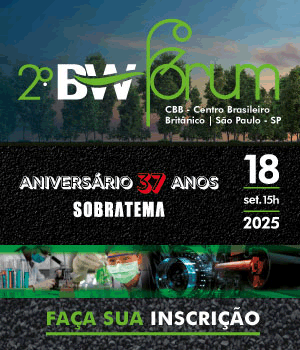Brazil’s "green" construction boom
The fourth largest market in the world in sustainable construction, Brazil has a vast line of suppliers of products and services, and leading-edge technology for reduction of environmental impacts, intelligent use of natural resources and energy efficiency

Worldwide, the market for green construction seems capable of weathering the crisis - that affects even those countries with the strongest, most solid economies - unscathed. The demand for sustainable buildings remains strong and interest in products that also bear “ecofriendly” credentials is growing. This trend is also seen in Brazil where there is an actual ‘boom’ in the area of sustainable buildings. Wherever you look, there are a growing number of commercial, industrial, corporate and residential buildings, as well as sports arenas and infrastructure works that are being executed utilizing technologies and methods of construction that enable more intelligent use of natural resources and energy efficiency while, at the same time, affording a reduction in environmental impacts during construction.
According to a report published by Navigant Research, a consulting firm, the global market for environmentally friendly or ‘green’ construction materials is expected to grow from the current US$ 116 billion to over US$ 254 billion in 2020 - an increase of almost 120%. And Brazil occupies a prominent position in this scenario. Presently, Brazil is among the top four world leaders in sustainable buildings; behind the United States, China and the United Arab Emirates, alone.
According to a study conducted by EY (formerly Ernst & Young) at the request of the Green Building Council (GBC) - a U.S. organization responsible for disseminating green building practices - the value of constructions with projects that are registered for certification as ‘sustainable initiatives’, also known as “green buildings”, reached 8.3% of the total ‘GDP for buildings’ – a subdivision of GDP for civil construction which excludes infrastructure – in 2012. In 2010, green buildings accounted for no more than 3% of GDP for the sector. The total value of realty ventures that have applied for the sustainability seal of approval reached R$ 13.6 billion (US$ 6.18 billion) last year, compared to a GDP for buildings of R$ 163 billion (US$ 74.1 billion) for the same period.
But just looking sustainable is not enough. You’ve got to prove it. That explains the growing demand among buildings of various types for sustainability certifications such as the LEED (Leadership in Energy and Environmental Design) seal, awarded by the GBC to those that qualify. In the first six months of this year alone, five new Brazilian construction ventures received the LEED seal and another 15 applied for certification. These numbers set Brazil at the mark of 88 construction projects certified - representing a total area of 2,089,195.20 m² - and over 680 applications for certification pending. It is expected that by the end of 2013 there will be 900 building projects applying for certification and 120 certificates issued.
To Luiz Iamamoto, senior manager at EY, LEED certification is being sought in an ever-growing number of segments such as schools, hospitals, association football (soccer) stadiums, commercial and industrial buildings, branches of banks and museums. Even realty funds have included LEED certification as a requirement for receiving investments.
This growth is driven by a harmonious combination of public policies and government regulations that prioritize energy efficiency and green design, and voluntary actions by the private sector which is committed to expanding certification programs for buildings and reducing the cost of green construction materials.
The determined efforts of the private sector cannot be explained by idealism and ecological awareness alone. What one can see behind these factors is an evident interest of the consumer market in this type of building; eyeing the advantages that such buildings ensure. Such advantages range from saving energy and cutting operating costs to appreciation in the value of the property at the time of resale. LEED certification adds value and arouses the interest of investors, increasing the attractiveness of properties in the corporate real estate market - especially by reducing operational risks. “When certified projects began to be purchased, contractors viewed this type of investment as an additional cost. Today they understand that the investment made in the short term may even be higher, but it is recovered by the speed at which these units are sold, besides reducing condominium expenses by 10% as a result of the projects for energy efficiency and water reuse”, concludes Luiz Iamamoto.
Besides the LEED seal of certification, present in 143 countries, Brazil also has the Aqua system, which originated in France and has been adapted by the Vanzolini Foundation – an organization linked to the University of São Paulo (USP). The Aqua system certified the first seven construction ventures in 2009 and today a total of 107 projects have been certified.
To qualify for the Aqua seal, projects must meet criteria within seven sustainability categories: energy efficiency; rational use of water, materials and resources; indoor environmental quality; sustainable site; innovations; technologies; and regional priority credits.
Major sporting events hosted by Brazil, such as the Confederations Cup, the 2014 FIFA World Cup and the Olympic and Paralympic Games in 2016, spurred the adoption of the green-building concept by contactors outside the realm of commercial and residential building construction, extending it to infrastructure works and the construction of the arenas where the events will be held. According to the GBC-Brazil, the 12 stadiums that will host the FIFA World Cup matches in 2014, and the arenas of the Palmeiras soccer team in São Paulo-SP and the Grêmio team in Porto Alegre-RS, are being delivered with the LEED seal of certification. The ‘Parque Olímpico’ (Olympic Park) in Rio de Janeiro and the revitalization of the city’s seaport zone, which has been christened ‘Porto Maravilha’ (Port Marvel), are also examples of projects that are being built based on the principles of sustainability and that are to be certified.

Especially as regards the soccer stadiums, one could see the adoption of leading-edge technologies such as the use of photovoltaic panels on the facades and roofs. In the Mané Garrincha Stadium in Brasília - an arena built by the consortium of contractors ‘Via Engenharia’ and ‘Andrade Gutierrez’, for example, the photovoltaic system is designed to produce 2.5 MW of electricity; enough to light up all the areas surrounding the sports arena.
The technologies used in the collection, treatment and reuse of rainwater are also outstanding features of the Mané Garrincha Stadium, enabling an 80% reduction in water consumption compared to a conventional stadium. The use of a self-cleaning film coated with titanium oxide, which captures the pollution generated by motor vehicles, is also a novel feature that has been deployed in this new arena which should be the first in the world to receive LEED Platinum certification - awarded for the most advanced use of sustainable technologies.
In the stadium known as ‘Arena Castelão’ in the city of Fortaleza-Ceará, the outstanding characteristic was the reuse of construction debris from the demolition of the old structure, which meant that the volume of demolition residues going to landfills was 75% lower than what is considered acceptable for a project of such proportions. The demolished structures were used to make gravel, grit and concrete.
At the ‘Arena Pantanal’ in the city of Cuiabá-Mato Grosso, the sustainability differential begins in the project which won the Bloomberg - Americas Property Awards and the ‘VII Grande Prêmio de Arquitetura Corporativa’ (VII Grand Prize for Corporate Architecture). The arena was designed to enable certain parts to be dismantled after the World Cup games thanks to the use of structures that can be rescaled according to the needs and size of the public. The core concern of the project was to dispel the risk that, in order to merely meet the recommendations and specific restrictions set by FIFA, its construction would result in a legacy of an oversized facility without actual utility for the local community.
The area occupied by the ‘architectural ensemble’ (complex) where the Arena Pantanal is located measures approximately 300,000 m². This space will be requalified so as to make the complex and arena a multi-purpose area for sports, cultural and educational facilities and leisure.
The Arena Corinthians, which is being constructed by Odebrecht, will also have photovoltaic panels (solar panels) for the generation of power, a system to collect rainwater from roofs and coverings, the use of wood from certified forests, energy efficient air-conditioning equipment and a lighting system that uses LEDs which are up to 80% more economical than fluorescent lamps and have a longer service life.
Many of the works for the expansion and modernization of airports, which were also foreseen in preparation for these sports events, are being implemented according to concepts of sustainability. That is the case of the Galeão Airport in Rio de Janeiro-RJ and Confins Airport in Belo Horizonte-MG, which establish the use of sustainable technologies such as rainwater collection and LED lighting.
It is expected that the savings provided by the use of sustainable technologies will inspire the adoption of sustainability standards in other infrastructure works, such as in the expansion of seaports and highways.

Av. Francisco Matarazzo, 404 Cj. 701/703 Água Branca - CEP 05001-000 São Paulo/SP
Telefone (11) 3662-4159
© Sobratema. A reprodução do conteúdo total ou parcial é autorizada, desde que citada a fonte. Política de privacidade











